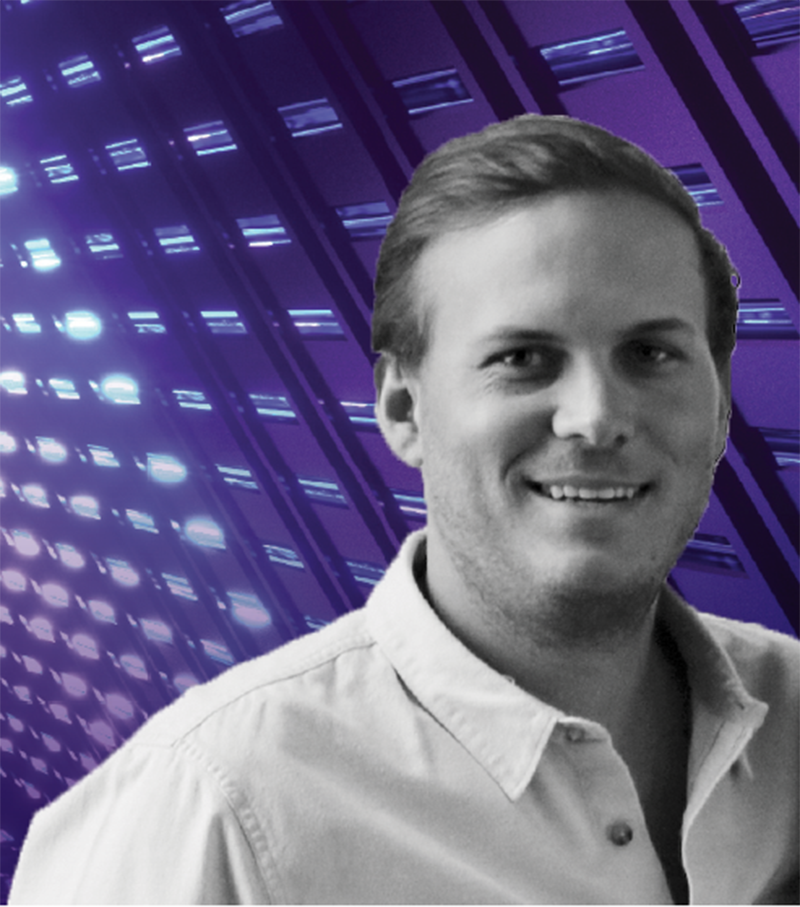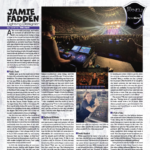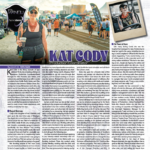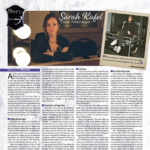
Video Shaker and Mover…
In PLSN’s continuing series of Parnelli Next Generation nominees, we introduce Nick O’Bryen, a man who came highly recommended to the Parnelli Board of Advisers. He may have just turned 30 last month, but he’s been around the biz since he was about 10 years old. He’s a project manager, he’s a video director, he’s an account manager and if you’ve been around any of the ginormous festivals, ranging from Coachella to Bonnaroo, Ultra to Lollapalooza (the list is virtually endless) there’s a good chance you’ve crossed his path.
Nick got his start by just hanging around with his dad Danny, who many of us know from running Screenworks. He chimes in, “I’ve been in this business pretty much as long as I can remember. I was always in my dad’s shop where I’d make a mess and was always tinkering with things. I think I’ve always had a camera in my hand since the time I could walk. I was just a kid when I started editing my own videos. By the time I was 14-15 I found myself operating cameras at some of the local radio shows around LA, such as KROQ’s Weenie Roast. In fact, there was one time when all of the other folks had gone to catch a meal and I was the only one around. So, I became a director that day. At some point the client walked by and saw this kid operating the switcher and gave me one of those ‘Whoa’ looks.”
Once out of high school, Nick went straight to college at UC Santa Barbara — to be an accountant. “It was a numbers thing. I liked them and figured it would be a good way to make a living. During the summers off from school, I had a job as an LED tech and camera op, the standard opening positions in the video business. I did the stadium shows with acts like Kenny Chesney with Ed Wannebo, and Billy Joel with Boomer Thrasher. Great people to learn from.”
His dad wanted him to get a college degree, and he did just that. But once he graduated, “The idea of sitting behind a desk five days a week just didn’t resonate with me. I walked into Screenworks and asked ‘What’s the next tour?’”
That would be Madonna’s MDNA tour in 2012 with Jake Berry. His main gig was as an LED tech and handheld camera operator working the thrust. “That gave me a taste of world travel. Next I found myself working with the Swedish House Mafia and getting entrenched in the whole EDM world.” He still considered himself a freelance guy when he hooked up with a popular act called Phoenix, an indie pop-rock group out of France.
“I started touring with them as an LED tech and soon learned the world of media servers. Before long, I was responsible for the Catalyst, and even started to sit in as the video director when we played festivals or had a camera package. I worked with LD John Labriola for two years on that. He was sort of my mentor and I learned so much from him. I concentrated on media servers for a while until I eventually decided to become a fulltime employee at Screenworks.”
Different Roles
Screenworks immediately capitalized on O’Bryen’s skills at doing every aspect of the job as well as his education with numbers. It was a smart move to designate Nick as an account and project manager. Around this same period of time, Screenworks was becoming entrenched in the festival market. Nick started dealing with clients such as Goldenvoice, Another Planet and the folks that put on various large rock as well as EDM festivals. His job covered the gamut on a project from the start to finish. “I work on it all as the point of contact right from the beginning. I deal with the design to the quote, to confirming the gig and allocating gear, to onsite project management — I pride myself on working the project from start to finish. A lot of my clients like that personal touch.”
He doesn’t claim to know how every little piece of gear works, “but I like to understand how and why each piece of gear works, why it could go wrong. I think it’s important that I have knowledge of most aspects in my industry.” He’d cut cameras on shows and over his early career learned a lot of his trade by being thrown into the fire. Nick adds his own advice to anyone in the same space he was in as a newbie, “Never be afraid to ask for help. Everyone on a show has the same goal as you, to create the best show possible.”
Once they started tackling many of the big festivals, O’Bryen quickly learned there was so much more to do than just prep a show. “These big sites required a large inventory and a lot of logistics. Working on festivals requires a lot of big moves. I’m talking moving anywhere from six to 12 trucks full of video around a site. Then there are the crews that we have to assemble for these massive events. It’s not unusual for us to have 40 to 50 employees involved in Bonnaroo for a couple weeks. Heck, we just spent four weeks out at Coachella, and that runs right into the Stagecoach Festival.”
By now, O’Bryen says he has a system down for dealing with these events, a lot better approach then when he started out. But still, “There are a lot of inventory related things that you have to keep track of. There are a lot of moving pieces, and missing any one of them is not really an option, especially when you are on a remote site like a desert.”
Despite his workload, Nick doesn’t rest on his laurels. In the last year or two, he claims to have really been pushing to increase his client base. “I like to get out there and mix with the designers, to share ideas and push designs, working with the designers to create something cool and different that not everybody is doing. That’s kind of been my focus now that I’ve done the project management for a few years. Take Ultra for instance. They hand us an illustration of a design they’ve come up with for their festival. It will look fantastic, but there are no logistics on how we’re going to be able to create, hang and control this massive structure. The salesman just closed the deal, then walked over to my desk and handed me a piece of paper saying, ‘Make it happen.’”
“There’s a little internal fight in me between the sales side of things and the creative side. I’ve always loved directing and actually getting in there and shooting cameras and getting behind the project like that, but the sales and production side is also rewarding.”
We asked him if he ever gets a chance to get behind the console and direct anymore. “Every once in a while, I get a chance to do the one offs, and I just love it. Particularly the radio shows — I directed a show for the Arctic Monkeys a little while ago. These radio shows are great for several reasons. First of all, I get to meet ten bands I may have never known before, and a few that I looked forward to seeing. But what’s really cool is when I see all these bands I grew up with and loved as a kid, and now I’m directing them for one night. I’ll always have that passion for directing.”
PLSN’s new NextGen column focuses on the next generation of lighting and video designers worthy of special recognition. To submit a name for consideration, send it to nook@plsn.com.


